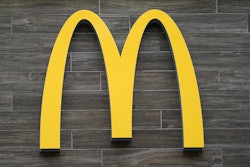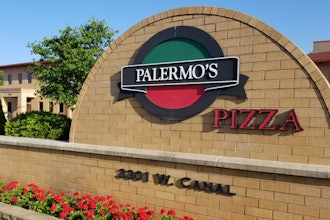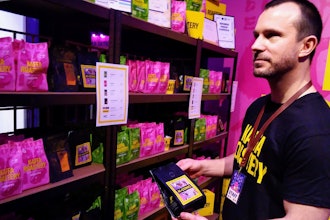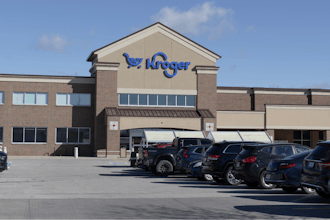
Digital transformation can mean many things and signify a variety of technology projects depending on the industry, size and needs of an organization. However, one of the first things that comes to mind — and one of the most common IT-led initiatives — is cloud adoption.
 Jeff Budge
Jeff BudgeAt this point, it would be nearly impossible for any food processing company to operate without at least some reliance on the cloud. In fact, it would be extremely challenging for modern manufacturers to survive without utilizing cloud storage and cloud computing in some capacity.
Because food manufacturers possess sensitive information, such as proprietary recipes, and data that needs to be shared between platforms and partners, they typically rely on a combination of on-premises solutions and various cloud services. The cloud is a necessity, but it’s not right for everything.
The question then becomes: How does a food manufacturer identify the best use of the cloud?
The answer depends on the maturity level of an organization’s digital transformation. You can break those levels into three stages:
- Embracing the multi-cloud environment
- Integrating platforms
- Leveraging data to support informed decision-making
Maturity Level 1: Embracing Multiple Clouds
Across industries, enterprises are mixing and matching services from various cloud providers as they look to meet ever-changing workload requirements. Multi-cloud environments offer efficiency, flexibility and can be more cost-effective than on-premises environments.
The transition into multi-cloud, however, can be challenging. It takes time, and requires a company-wide strategy involving key stakeholders connected to IT modernization in your organization. While the competition may be migrating to the cloud, that shouldn’t be the main reason for pursuing this move. As my OneNeck IT Solutions colleague, Clint Harder, points out, you need to tie your strategy to business objectives.
“It is essential to have a comprehensive cloud strategy that defines the organization’s goals for moving to the cloud,” Harder says. “Is the primary goal to accelerate application delivery or to reduce risk? Do you want to improve IT efficiency or add new capabilities and expand into new geographies?”
Food processing companies impacted by regulations under the Food Safety Modernization Act (FSMA) would benefit from improved data visibility and management that a multi-cloud strategy provides.
FSMA requires detailed documentation so processors can show the FDA they are following the rules and established sanitation practices. Your food safety plan also needs to be available across the organization and to external partners including suppliers, distributors, transportation carriers and retailers. A multi-cloud strategy will help you manage compliance and improve the traceability of products throughout the supply chain.
Maturity Level 2: Integration
As you begin implementing a multi-cloud strategy, you’ll need to take inventory of existing applications and vendors to determine how they fit with the plan. Some applications may need to be retired, others may need to be optimized and some may need to evolve and transform to improve value. You may decide to stop working with some vendors, expand your partnership with others or find a new IT partner to serve your needs.
Evaluating your technology in this way helps improve data visibility so you can develop a digital transformation roadmap focused on specific goals. You can’t integrate applications in the cloud until you understand where everything is located. Once you know where your data lives, you can determine how to manage, integrate and protect it.
With myriad applications running on multiple cloud platforms, the next crucial step is developing a way to connect everything as data moves among the clouds. How does Cloud A connect with Cloud B? How does the data get there? How can you confirm the validity of the data? Is it secure?
Beyond the elimination of siloed applications and data between departments in your organization, you’ll also need to integrate with business partners. Not only is this beneficial for FSMA compliance, it will also ensure uninterrupted logistics and smooth relations with major retailers.
Our food and beverage manufacturing clients often come to us because they need IT modernization guidance in order to keep customers happy. Walmart, Amazon and other major retailers are leading the way in digital transformation. They’ve already gone down a path of what the requirements around data sharing and security should look like. The ability to integrate with these partners is imperative.
Maturity Level 3: Leveraging Data
Access to more data is a helpful thing, but it also creates complexity. Data won’t be very helpful if you’re unable to take that information and use it to make better business decisions.
A decade ago, most software vendors were focused on developing ways to create and collect data. But, the real value comes when you discover ways to leverage that data to make positive improvements. Thankfully, software giants such as Microsoft, Oracle and SAP are now focusing on visualization and the use of data to help clients determine what to do next. Because many food companies are already aligned with these tech companies, embracing modernization becomes a natural transition.
Many food manufacturers are being pushed along the digital transformation journey, as their software vendors and supply chain partners require them to advance. At the same time, there are also forward-thinking food processing companies who don’t want to follow, they’d rather lead.
These proactive organizations are aggressively pursuing digital transformation and identifying ways to leverage data into business opportunities that gives them a competitive edge. They’re partnering with trustworthy IT solution providers and consultants who can advise on strategy while supporting and managing technology in order to concentrate on what they do best — food manufacturing.
What’s Your Digital Transformation Strategy?
Whether your organization is just beginning to consider a multi-cloud strategy, looking for ways to modernize and integrate applications or striving to leverage data, you need a plan. And, you’ll experience more success if that plan is in line with business objectives. Avoid pursuing advanced technology like automation and machine learning until your organization has a handle on the basics of operating in a multi-cloud world. Make sure you work toward integration and finding ways to interpret data into insights instead of simply collecting information.
It’s important to recognize that digital transformation won’t be achieved all at once — after all, it is an ongoing process. IT modernization takes place step-by-step and project-after-project. The right technology partners can help you decide where you should start, find ways to fill IT talent gaps and lay out the next steps of your strategy.
Jeff Budge is Vice President of Advisory Services at OneNeck IT Solutions.






















